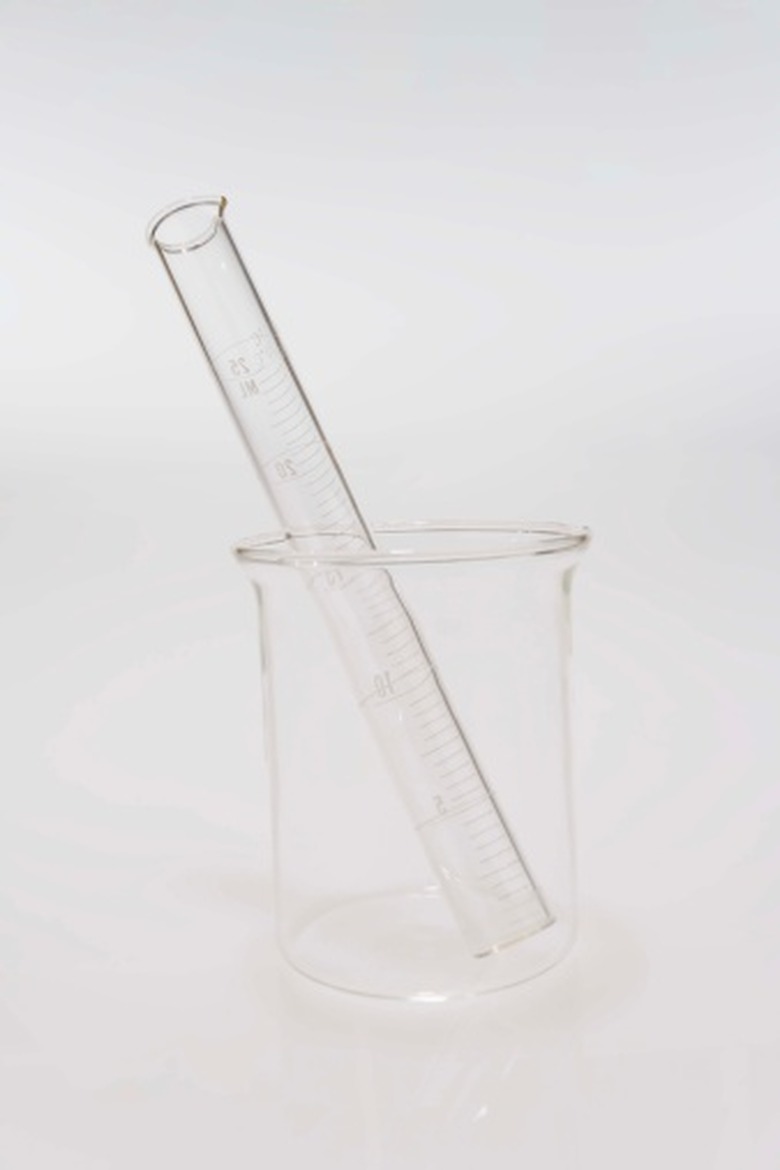How To Use Beakers
A beaker is a cylindrical container used to store, mix and heat liquids in laboratories. Most are made of glass, but other non-corrosive materials, such as metal and heat-resistant plastic, are also used. Beakers usually have a flat bottoms and a lip around the top. They range in size from one millimeter to multi-liter. Bunsen burners, heat plates, stirrers, safety tongs, safety goggles, gloves and lab coats are tools commonly used when working with beakers.
Step 1
Pour liquid into the beaker; pour slowly to avoid splashing the liquid. Use the measuring lines on the beaker to approximate the volume of liquid in the beaker.
Step 2
Stir the liquid inside the beaker with a spoon or stirrer.
Step 3
Center the beaker on a burner or over an open flame to heat the liquid, if necessary; don't fill the beaker more that 1/3 when heating and always use safety tongs when handling a hot beaker.
Step 4
Pour liquid out of the beaker by using the spout in the lip around the top of the beaker.
Things Needed
- Beaker
- Stirrer
- Burner or open flame
- Safety tongs
References
Cite This Article
MLA
Young, Robert C.. "How To Use Beakers" sciencing.com, https://www.sciencing.com/use-beakers-8179802/. 24 April 2017.
APA
Young, Robert C.. (2017, April 24). How To Use Beakers. sciencing.com. Retrieved from https://www.sciencing.com/use-beakers-8179802/
Chicago
Young, Robert C.. How To Use Beakers last modified March 24, 2022. https://www.sciencing.com/use-beakers-8179802/
